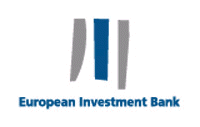Since its creation in 1958 under the Treaty of Rome, the European Investment Bank (EIB) has established itself as a world leader among multilateral financial institutions and non-sovereign borrowers. So as to reflect more closely its specific role as the European Union's financing institution, the EIB has decided to modify its visual identity and logo with effect from 1 March 1999, a defining year for EMU with the successful launch of the single currency and over forty years since the EIB commenced its activity in support of the Union's objectives.
The new EIB logo is intended to embody the idea that the Bank is investing in Europe's future, nurturing the European Union's objectives. It also seeks to stress the concept of partnership, one of the key elements of the EIB's modus operandi: investment carried out in the interests of European integration with the support of the EIB and other institutions, whether these be EU organisations or members of Europe's banking community. Visually, the logo is designed to highlight the Bank's solidity and stability, without being aggressive or commercial.

Adoption of the new logo represents a response to the profound changes witnessed by the EIB over the past ten years in terms of its borrowing and lending facilities, the increased sophistication of its operations and its ever growing partnership with both the banking community and EU institutions. These developments give practical expression to the new remits entrusted to the Bank by the European Union (notably supporting successful introduction of the euro, fostering growth and employment in Europe, assisting applicant states, etc.), which have raised its profile among the European public.
The new EIB logo replaces the previous design dating back to 1963, based on a map of Europe and inspired by the symbol of the United Nations. Although modified in 1974, 1980, 1981, 1986, 1990 and 1995 in conjunction, inter alia, with successive enlargements of the Union, the 1963 logo gave no sense of the scale and constant expansion of the project of European integration, underpinned by the Bank. Nor did it convey the EIB's present values: long-term financing, solidity and partnership.
Visual impact
The logo is composed of three vertical elements tracing the form of a square.
The central element is "European blue" in colour: it represents the "project of European integration" and echoes the main symbol of the European Union. The side elements are grey, the dominant colour of the Bank's building; they surround and protect the central element.
The square is the shape generally adopted for bank logos, and therefore underscores the specific role of the EIB among the European institutions and its ties with the financial community. However, in contrast to most symbols in the banking world, the square formed by the new logo is neither complete, closed nor totally symmetrical. This open quality reflects the process of European integration, the very reason for the Bank's existence: while the symbol is irreversible and robust, it is also receptive to the outside world.
Use
The logo is now being used in conjunction with the Bank's name printed in "European blue" in the language version of the document concerned, either alongside or below. Thus, there is a version of it in each of the Union's official languages. Furthermore, in the new layout of Bank publications the familiar symbols of the European Union (blue, stars) are displayed alongside the new logo, thereby reinforcing the EIB's identity within the European banking community as an EU institution.
The new EIB logo is protected by legal registration, notably with the WIPO (World Intellectual Property Organization).
This new design was developed with "LANDOR Associates", London, selected after a call for tenders from European companies specialising in the creation of corporate identities. Landor is one of the most well-established firms in this field. Founded in London in 1940, it transferred its head office to San Francisco (USA) in 1941 and now has a worldwide network of 19 branches in 13 countries.